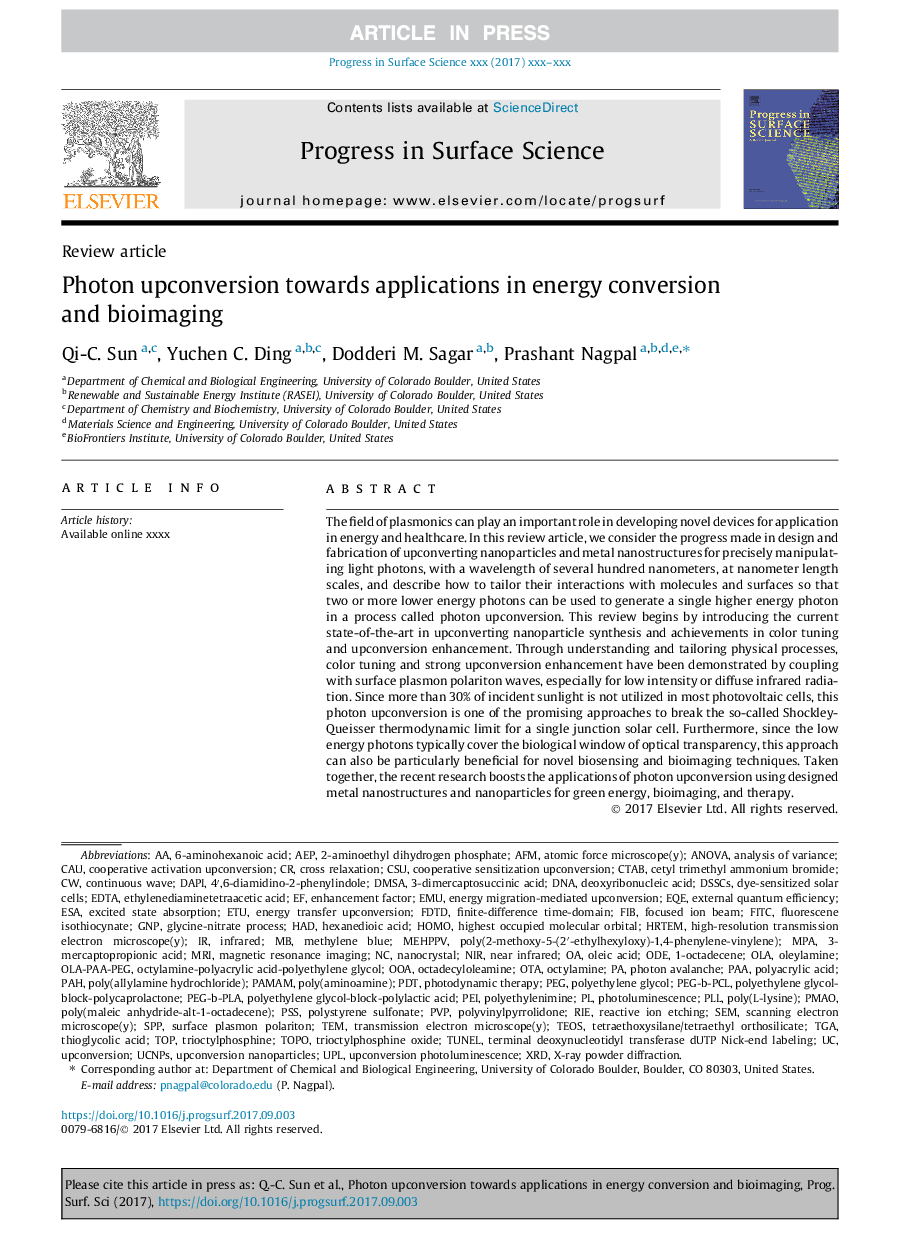| Article ID | Journal | Published Year | Pages | File Type |
|---|---|---|---|---|
| 7844469 | Progress in Surface Science | 2017 | 36 Pages |
Abstract
The field of plasmonics can play an important role in developing novel devices for application in energy and healthcare. In this review article, we consider the progress made in design and fabrication of upconverting nanoparticles and metal nanostructures for precisely manipulating light photons, with a wavelength of several hundred nanometers, at nanometer length scales, and describe how to tailor their interactions with molecules and surfaces so that two or more lower energy photons can be used to generate a single higher energy photon in a process called photon upconversion. This review begins by introducing the current state-of-the-art in upconverting nanoparticle synthesis and achievements in color tuning and upconversion enhancement. Through understanding and tailoring physical processes, color tuning and strong upconversion enhancement have been demonstrated by coupling with surface plasmon polariton waves, especially for low intensity or diffuse infrared radiation. Since more than 30% of incident sunlight is not utilized in most photovoltaic cells, this photon upconversion is one of the promising approaches to break the so-called Shockley-Queisser thermodynamic limit for a single junction solar cell. Furthermore, since the low energy photons typically cover the biological window of optical transparency, this approach can also be particularly beneficial for novel biosensing and bioimaging techniques. Taken together, the recent research boosts the applications of photon upconversion using designed metal nanostructures and nanoparticles for green energy, bioimaging, and therapy.
Keywords
PEIAFMTEOSCTABPAHFITCPVPAEPTGANIRHRTEMPSSUpconversionODEFIBPAADSSCsEQEPDTSPPOTADAPIMPAESARIEPLLDMSA6-aminohexanoic acidCSUUPLOOAGNPPEG-b-PCLFDTD1-octadeceneOleylaminePoly(maleic anhydride-alt-1-octadecene)Upconversion photoluminescenceMEHPPVHexanedioic acidPEG-b-PLA4′,6-diamidino-2-phenylindoleDNATOPOUCNPsCross relaxationEDTAEthylenediaminetetraacetic acid3-Mercaptopropionic aciddeoxyribonucleic acidThioglycolic acidOleic acidEmuMRIEnergy transfer upconversionHomoOctylaminereactive ion etchingTrioctylphosphine oxideTemFocused ion beamExternal quantum efficiencyTOPhighest occupied molecular orbitalcetyl trimethyl ammonium bromidecauPhoton avalancheanalysis of varianceANOVAterminal deoxynucleotidyl transferase dUTP nick-end labelingTrioctylphosphineMagnetic resonance imagingTUNELExcited state absorptionETUHADFinite-difference time-domainPhotodynamic therapyGlycine-nitrate processDye-sensitized solar cellsEnhancement factorPhotoluminescenceInfraredNear infraredMethylene blueSEMcontinuous waveUpconversion nanoparticlesnanocrystalOLAPAMAMXRDX-ray powder diffractionSurface plasmon polaritonPoly(l-lysine)Polyethyleniminepolyethylene glycolPolystyrene sulfonatepoly(allylamine hydrochloride)polyvinylpyrrolidonePolyacrylic AcidPEG
Related Topics
Physical Sciences and Engineering
Chemistry
Physical and Theoretical Chemistry
Authors
Qi-C. Sun, Yuchen C. Ding, Dodderi M. Sagar, Prashant Nagpal,
